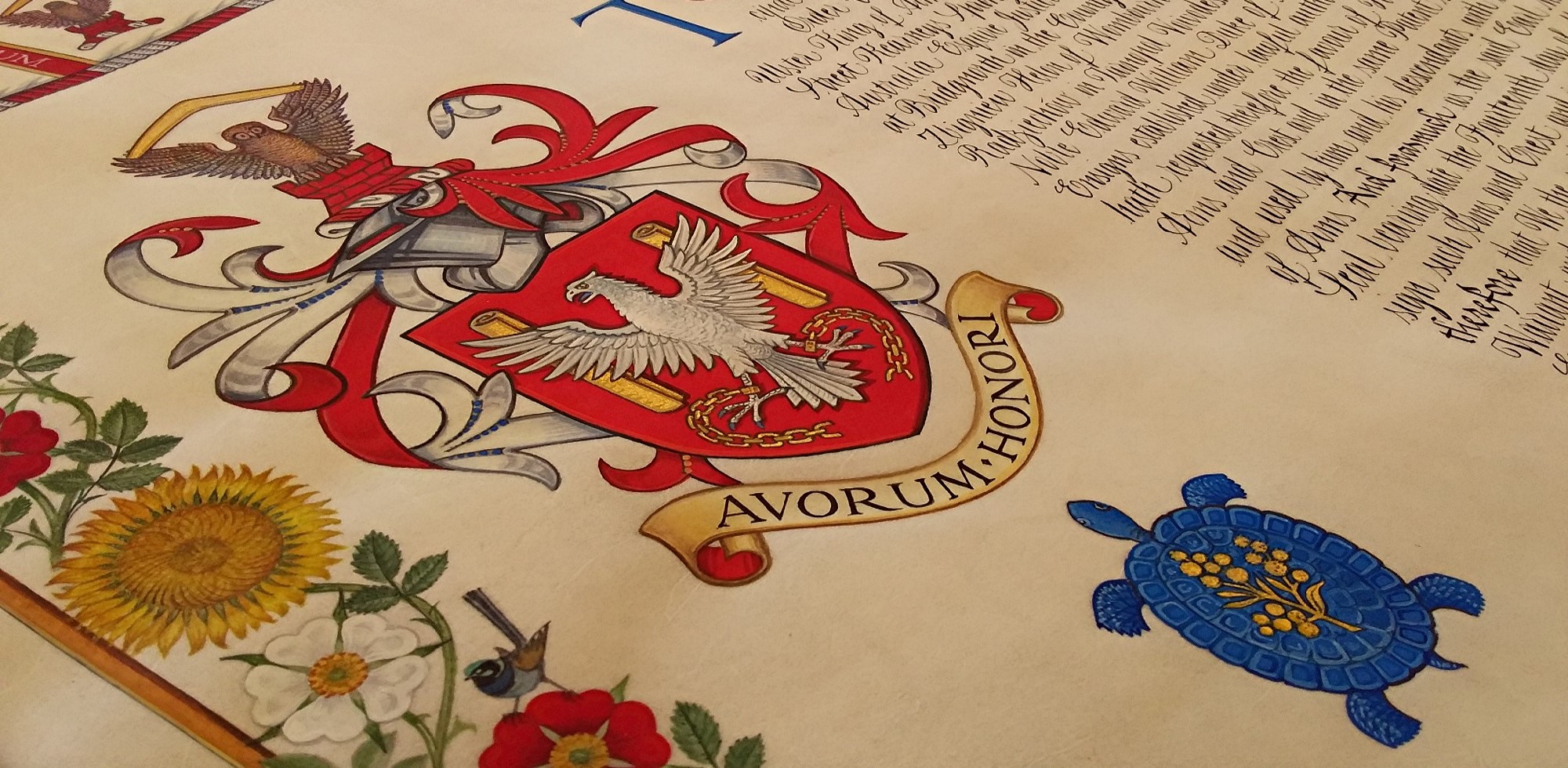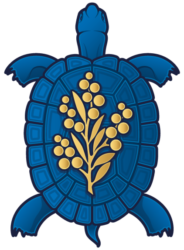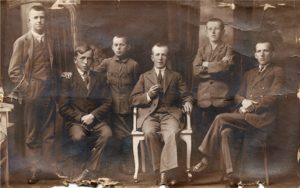
The History, Heritage and Estates of the Helon Family!
Prologue!
It should be noted and understood that the information, documentation and archival records appearing here relate to only one branch of the family (mine), not to all Helon kith and kin around-the-world.
Although you may be related to a common distant ancestor of this branch of the Helon family it does not mean you acquire any relationship to it, or derive any status from it.
The Pre-Exilic Years: 1905-1940!
Until the night of Friday 9 / Saturday 10 February 1940 my great grandparents Pawel and Karolina Helon (nee Mulka) lived in the village of Pawłów with my uncle Stefan.
My grandparents Michal and Genowefa lived with my father Zbigniew (born Jan) and his sister Jozefa Leokadia (more affectionately known as Lodzia; say lod-jar) at their farm in Krzywe.
Pawłów is a village (Polish, Wieś) also known as: Pavliv, Pavlov, Pawlow, Pavluv, Павлів; previously in the county (Polish, Powiat) of Radziechow (Radekhiv), province (Polish, Województwo) of Tarnopol (Ternopil); currently situated in the Radekhiv Raion of the Lviv Oblast within the geographical boundary of the Ukraine; 424.4 kilometers West of Kyyiv @ Lat. 50°16′ N X Long. 24°32′ E.
The village of Pawlow was established west of the Pawlow Manor (Polish, Dwor) which was under the sterwardship of Pawel Helon who served the Manorial Court of the Count Palatine (Latin, Comes Palatinus). In official Latinate records Pawel Helon was designated a Famulus Aulicus (Polish, Służący Dworski) – one who serves or attends at a Royal, Imperial, Noble, or Manorial Court; a noble serving a Great Lord or King at Court.
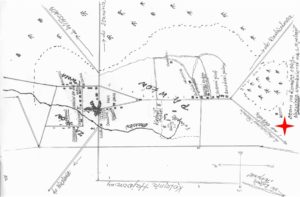
A Famulus Aulicus was a nobleman of equal or lower rank than the personage he attended on, i.e. a lesser noble, one without a Liege Lord or Overlord – one who had not sworn fealty (an oath of faithfulness or pledge of allegiance) to another.
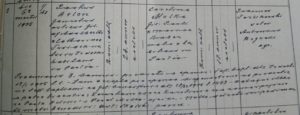
Krzywe is a village (Polish, Wieś) also known as: Krivoye, Kryve, Kshchive, Криве; previously in the county (Polish, Powiat) of Radziechow (Radekhiv), province (Polish, Województwo) of Tarnopol (Ternopil); currently situated in the Radekhiv Raion of the Lviv Oblast within the geographical boundary of the Ukraine; 416.9 kilometers West of Kyyiv @ Lat. 50°14′ N X Long. 24°39′ E.
Pawlow was located about 8 kilometres southwest of Radziechow, whereas Krzywe was located about 6-and-a-half kilometres south of Radziechow.
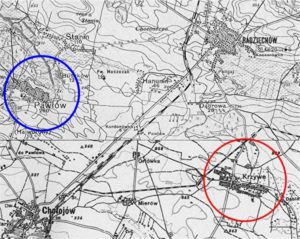
Most interestingly, in the 1930 Census of Voters for the village of Pawlow, Pawel and Karolina Helon are noted as numbers 1 and 2; that is they were still occupying the noble estate as reflected in their Marriage Certificate of 1905.
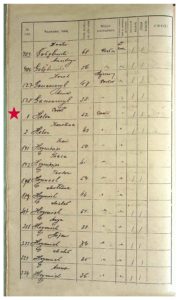
According to Economics Professor Antoni Rogucki (who was born at Pawlow in 1920) oral legend had it the families “Helon and Korkosz originally came from Polski Spisz with Count Komorowski (Herb / Coat of Arms Korczak) during the Austrian occupation of the territory.”
“These families were more Slovakians (Slavs) than Hungarians and very clever craftsmen invited by the Count to build his new seat at Nowy Witkow.” (1)
Polski Spisz (Polskiego Spisza, or Polish Spisz) is a small ethnographic and geographical region in southern Poland situated between the Polish-Slovakian border in the south, the Bialka River in the west and north, and the Dunajec River in the north-east.
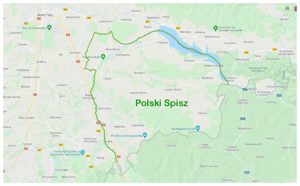
The appellation Spisz is derived from the Polish word spac, i.e. sleep, or to be asleep.
There are just over a dozen villages in Polski Spisz, among them: Czarna Gora, Dursztyn, Falsztyn, Frydman, Jurgow, Kacwin, Krempachy, Lapszanka, Lapsze Nizne, Lapsze Wyzne, Niedzica, Nowa Biala, Rzepiska and Trybsz.
It is worth noting that the surname of a closely related family, Fal (sometimes Fall, or Fil) is derived from the place name Falsztyn.
The Post-Exilic Years: Reconnecting a Family Link!
Among other things, one of the most disturbing and heartbreaking consequences of seeking out our forebears is discovering them lying in unmarked graves.
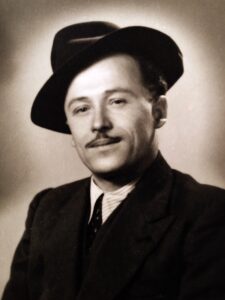
After tracing my grandfather Michal Helon’s grave to Wrexham cemetery in Wales – not in England where he lived, long story – l arrived there on Thursday 22 September 2016 with a few flowers in hand and was given a map of its location by the administrator.
I walked up and down the area I was directed to, but I couldn’t see my grandfather’s grave anywhere.
Going back to the administration office to enquire, I was told he is between so and so whose graves were pointed out to me.
I went back to the location l was directed to; nothing but sticks and leaves on the ground – I was devastated!
Having cleaned up the area, I grabbed a large stumpy stick to hand and began to trace out the grave’s shape.
The ground was very hard and after nearly ten minutes l had barely scratched out two sides when l got overwhelmed with emotion and burst out bawling.
I vividly remembered my father telling me when his only sister died in the slave labour camp in Siberia he and his parents had to use sticks to dig her shallow grave in the permafrost ground.
Now here I was quite literally 70 years later doing the same for my grandfather.
My grandfather was a missing link, his name had to be restored.
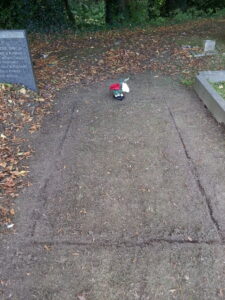
Fast forward five years, and quite by accident, a post in the Polish language popped-up on my Facebook feed: “Honorowac Polskich Weteranow (Honour Polish Veterans).”
And so began my odyssey to have my grandfather not only recognised, but honoured.
On Wednesday 31 March 2021, I made application to the Institute of National Remembrance Commission for the Prosecution of Crimes against the Polish Nation (Instytutu Pamieci Narodowej (IPN) Komisji Scigania Zbrodni przeciwko Narodowi Polskiemu – KSZpNP), Office for Commemorating Struggle and Martyrdom, with respect to having the grave of my late grandfather entered into the Institute’s Register of the Graves of Veterans who Fought for Poland’s Freedom and Independence.
An entry in the Register of Veteran’s Graves gives the Polish state care over the grave; and for me, peace-of-mind knowing that my grandfather can never be disinterred as happens in some cemeteries.
After a flurry of correspondence and documents to satisfy the formalities of my application I was advised on Monday 12 July 2021 by Dr Jaroslaw Szarek, President KSZpNP, that my grandfather’s grave “was given the status of veteran’s grave, a grave of a veteran who fought for the freedom and independence of Poland and (would) appear in the records of graves created by the Office for Commemorating Struggle and Martyrdom from now on, under registration number – 2097.”
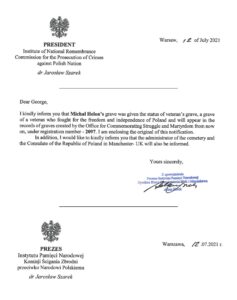
Following on from previous correspondence, I asked once again about getting assistance to erect a headstone at the then unmarked grave of my grandfather.
For almost two years communications were flowing constantly back-and-forth between Australia, Poland, England and Wales; but the stress and delays were worth bearing!
Polish authorities advised me on Friday 4 November 2022 that my grandfather’s headstone was finally completed and erected at his grave.

In English, the headstone reads:
PRIVATE
MICHAL HELON
(Born) 13 October 1914 PAWLOW, LWOW REGION, POLAND
(Died) 16 February 1976 PENLEY, WALES
EXILED TO THE USSR IN 1940
SOLDIER OF THE POLISH ARMED FORCES IN THE USSR 1942
POLISH ARMY IN THE EAST 1942-1944
2ND POLISH CORPS 1944-1947
PARTICIPANT IN THE BATTLE FOR MONTE CASSINO
CROSS OF MONTE CASSINO
1939-1945 STAR
DEFENCE MEDAL
ITALY STAR
With special thanks to the Government of the Republic of Poland and the Institute of National Remembrance (IPN) Commission for the Prosecution of Crimes against the Polish Nation (KSZpNP), and more particularly to Magdalena Kwiatkowska for facilitating everything.
All that Remains of the Family’s Material Wealth?
On his return to Australia in 1998 from a trip to Poland to see my paternal grandmother Genowefa, my father handed me two things; one was a small, yet rather heavy bundle wrapped in dirty newspaper and tied with grease-inlaid string, the other – a scrunched-up dirty rag!
My father told me quite emotionally, “this is your inheritance for the family.”
After undoing the greasy string and unwrapping the newspaper from the package, I came upon a tightly folded and musty smelling rag which covered the bundle I was holding in my hand.
I looked at my father, and he at me; “I’ve got no idea what it is son,” he said shrugging his shoulders.
With much anticipation I very slowly and curiously unwrapped the dirty cloth to reveal thirteen pieces of very badly tarnished silver cutlery that looked as though it hadn’t seen the light of day for many, many years.
There was 1 large serving spoon, 1 large fork, 7 eating forks and 4 teaspoons; was this is all that remained of the family’s material wealth?

Presumably the large serving spoon and fork would have been used in Siberia for the cooking, with one eating fork for every member of the family: Pawel (died Siberia Saturday 14 September 1940), Karolina (died Siberia Friday 2 August 1940), Michal, Genowefa, Stefan, Zbigniew and Jozefa Leokadia (died Siberia Tuesday 28 January 1941).
Look at the wear of the forks; how poignant!
Now as for the scrunched-up dirty rag, when I unfolded it I found three dried seed pods.

Taken aback, I immediately thought of how Jack received some beans for his mother’s cow and how he climbed the beanstalk to steal the giant ogre’s treasures so that he was able to redeem the poverty of his family.
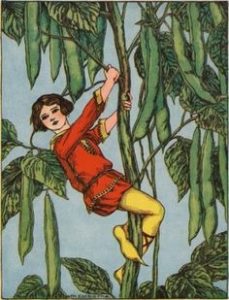
But that’s another chapter.
References:
(1) Rogucki, Professor Antoni. Born in Pawlow on Saturday 23 October 1920 and died on Thursday 10 May 2018 in Warsaw. Rogucki was a neighbour of Pawel and Karolina Helon; Personal Correspondence to Wieslaw George Helon: Warsaw; Friday 4 October 2002.
Connect with Me!
Copyright (C) George W. Helon: Australia; 2018-2024.
Now with SSL Certification for your Security!

